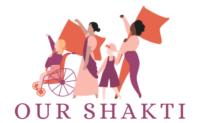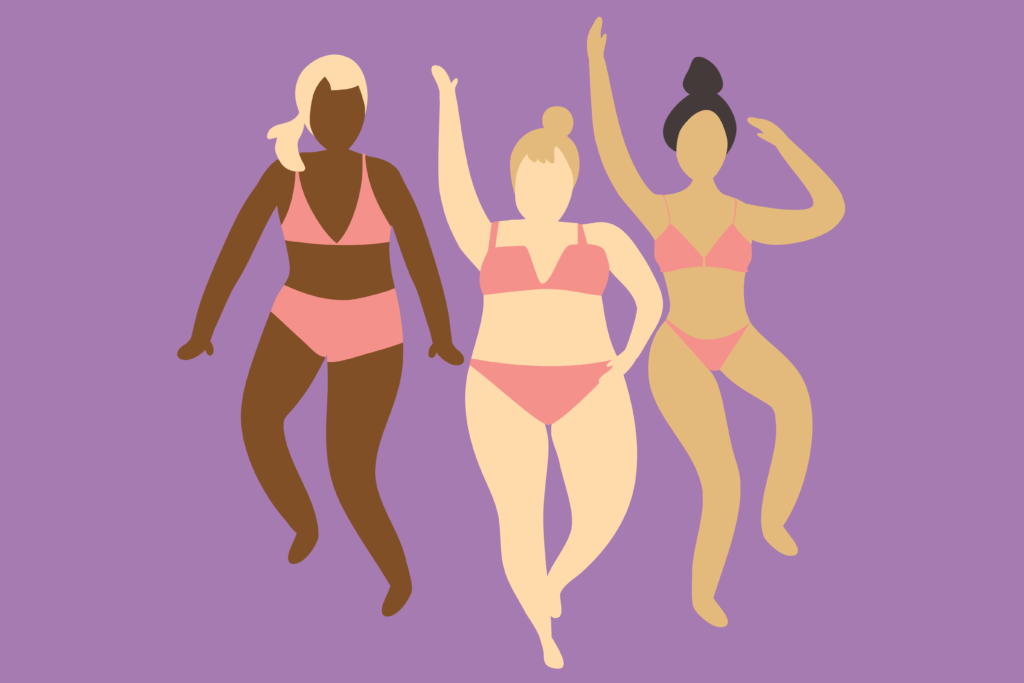Throughout history, people, especially women, have tried to change their bodies to conform to the specific era’s image of beauty. For example, tightlacing was practised by western women to artificially get a smaller waistline, Burmese women wore brass neck rings to artificially lengthen the neck, and Chinese women practised the custom of foot binding to change the shape and size of their feet.[1] Nowadays, the mainstream media influences consumer behaviour by perpetuating ideas on beauty trends seen in commercial advertisements and movies. Social media also portrays ideal beauty standards and body image comparisons. This affects the decisions of men and women’s beauty choices.[2] For women, attaining physical attractiveness is a must in every part of the world. Nothing is off-limits when it comes to women’s beauty standards: height, bust, waist, hips, buttocks, weight, lips, nose, eyes, eyelashes, hair, skin colour, eyebrows, teeth, and aging skin. People have many ideas about what a physical attractive woman looks like. But how does this differ per region today? And how do beauty ideals affect women?
Beauty ideology
The obsession with beauty and the implication for people has a name in research: beauty ideology. According to Casanova (2018:12) beauty ideology refers to “a system of interconnected and mutually reinforcing ideas and ideals, a system that is often propagated by society’s elites but subscribed to by many others.”[3] Beauty ideology is thus hegemonic and benefits mostly members of the upper and middle classes. Why is it important to understand beauty ideology? Ideas about what a beautiful face and body looks like shape how women feel about their bodies, how they present themselves in social settings, and how they view the bodies of others. Understanding beauty ideology gives us insight into the micro-decisions and for some macro-decisions that we make about our physical appearance: scrubbing the face to avoid getting pimples (pimples = not physically attractive), buying anti-aging cream when noticing a wrinkle (wrinkles = not physically attractive), buying whitening creams to get a light skin colour (brown/black skin colour = not physically attractive), or getting a breast augmentation (small boobs = not physically attractive).
Regional differences in beauty standards
Latin America
Casanova (2018) argues that beauty ideology in Latin America is based on forms of race relations and social constructions of race.[4] She argues that since colonial times, whiteness and Europeanness have been indicators of elite status. Towards the end of the 19th century, the racial project of blanqueamiento or whitening began. As a result, many women chose whiter partners, used whitening creams, or applied a light foundation colour to appear whiter. In most Latin American countries, there is also a beauty standard for women to have large and curvy bodies. With the influence of the US mainstream media, Viladrich et al. (2009) found that Latina women reported a drive for thinness while simultaneously appreciating the curvier body type.[5]
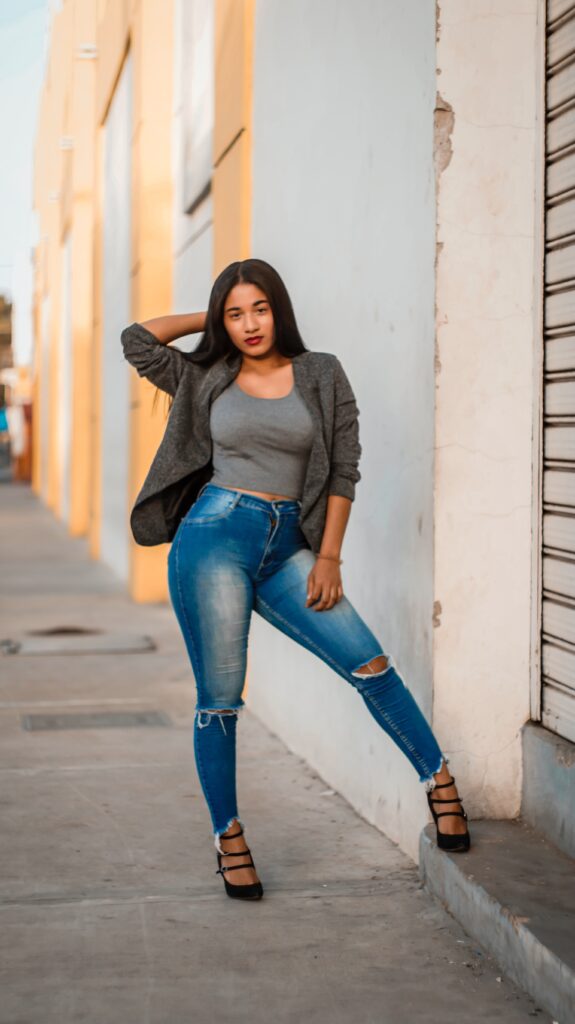
Asia
Like Latin America, having a white skin is also a beauty standard in many Asian countries, such as Japan, Korea, Malaysia, China, and India.[6] Whiteness of a woman affects her marital prospects, job prospects, social status, and earning potential. This implies that a lighter-skinned woman has a better life prospective compared to a darker-skinned woman. It is important to note that the beauty ideal of white skin in Korea and Japan predates colonialism and the introduction of Western notions of beauty, while in other parts of Asia it is influenced by a colonial past. The ideal Asian woman has a slim body and thick long hair. With the influence of Western notions of beauty standards, height has also become a beauty standard. For instance, India won many international beauty pageants in the 1990s which is the reason why many Indian actresses have the length of models. This has not changed much after this period. Having “never-ending legs” is seen as beautiful.[7] However, it also comes with a disadvantage for tall women as men refuse to marry women who exceed their height. There are cultural differences among Asian countries in beauty standards. For example, in South Korea, pale skin, big eyes with double eyelids, tiny nose, small face, rosebud lips are seen as beautiful.[8] Since this is difficult to achieve naturally, many people choose for cosmetic surgery.

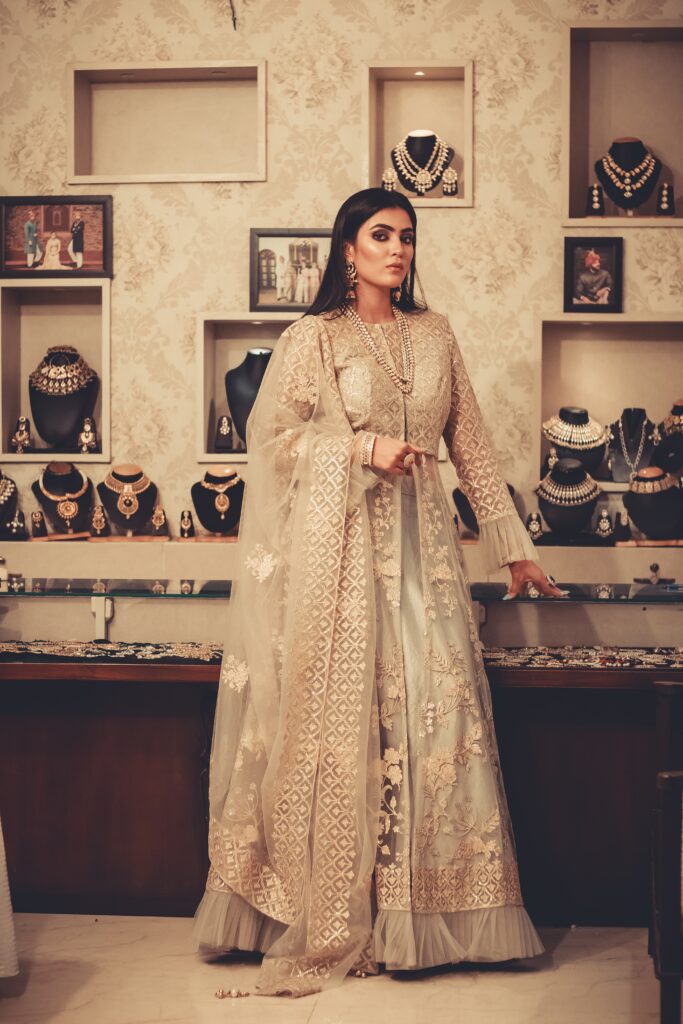
Europe & North America
Beauty ideals in Europe and the United States change fast and are influenced by the fashion industry. As mentioned before, in the 19th century, women used the practice tightlacing and wearing a corset to get a smaller waist. During the mid-19th century, the ideal body figure of women was voluptuous with larger breasts and wide hips (hourglass figure).[9] From the 70s onwards, slender, tall bodies with small hips were the next new trend. Interestingly, the focus on thinness has not changed. Today, curvier bodies are back again but still with a small waistline. Western beauty standards are also more associated with the idea of youthfulness.[10] Ageism denotes that old is ugly, while youthful is beautiful. This beauty ideal is perpetuated by the cosmetics industry, because they often use young models for makeup advertisements. In contrast, older women are mostly seen in anti-aging advertisements. As if older women don’t wear make-up or are only good for promoting products that turns them into younger looking women.
Western beauty ideals are hegemonic. This implies that whatever is seen as beautiful in Europe or North America eventually also becomes a beauty standard in other parts of the world. In fact, some scholars argue that white (Caucasian) features are favoured over other ethnic features.[11] Therefore, the preference for slim and short body types, almond shaped eyes, tanned skin, thick long or curly hair, is non-existent in Western countries. While we do observe the replication of white features in other parts of the world e.g., bigger eyes, appreciation for taller women and light-skinned women.
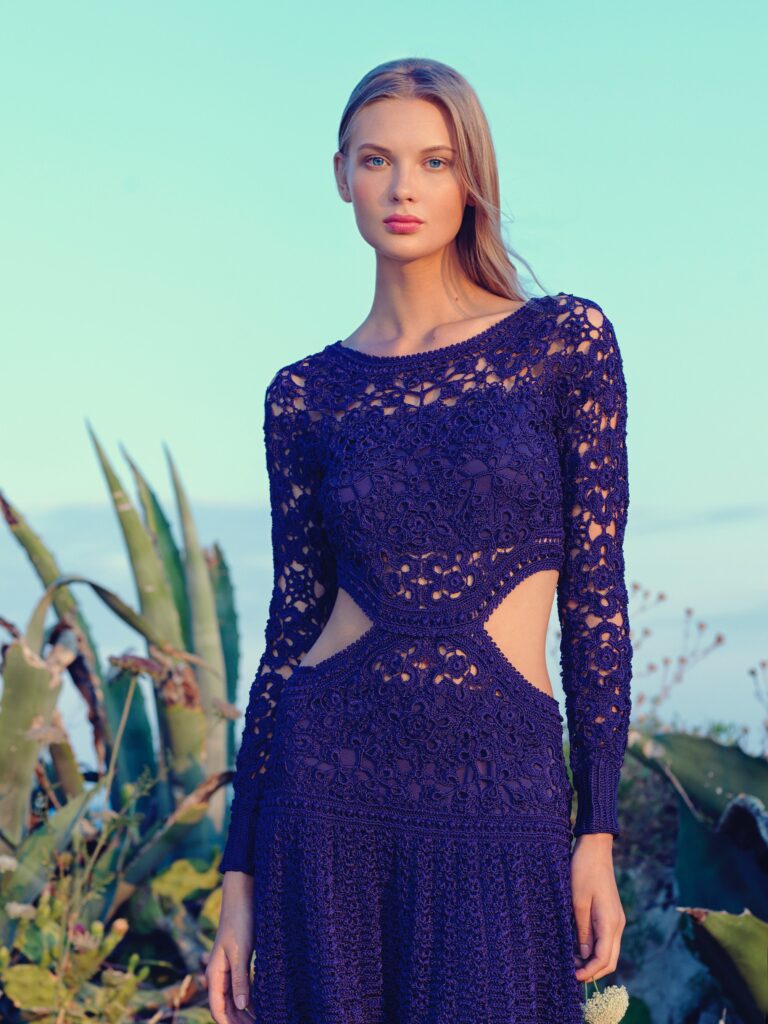
Africa
While thinness is seen as a way to become physically attractive in Western countries, the reverse is true in Mauritania, Niger, Kenya, Uganda, Nigeria, and South Africa.[12] Thickness or obesity is seen as a beauty standard in rural areas of these African countries. Round booty, wide hips, and big thighs are seen as “sexy”. Mainly because it is associated with being fertile, healthy, and wealthy.[13] Young girls are sent off to fat camps to be force-fed in order to gain weight and return as a beautiful woman. This practice called Leblouh is done to make girls look more mature which is an indication that she is ready for marriage. The younger generations view this practice negatively and adopt the Western beauty ideal of thinness.[14] The Western beauty standards influences African beauty standards, which is why many African women spend a lot on hair treatments. Some women might even experience discrimination if they keep their natural hair in the workplace or by potential dating partners.[15] Skin tone is as well an issue in Africa as a light skin is perceived more favourably compared to dark skin.
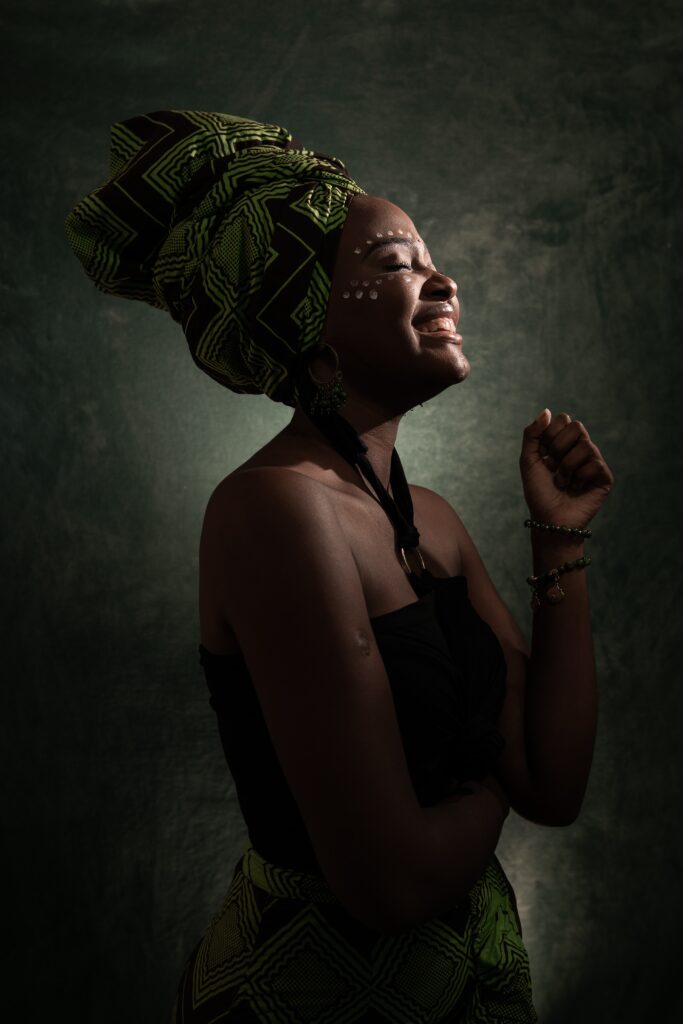
Middle East
In the Middle East, women are naturally built curvier. A healthy body has meat on the bones and is also a sign of being wealthy. According to Kashmar et al. (2019), female beauty is generally characterized by an “oval or round face; large almond-shaped eyes; prominent, elevated, arched eyebrows; a small, straight nose; well-defined, laterally full cheeks; full lips; a well-defined jawline; and a prominent, pointed chin”.[16] Cosmetic surgery is very popular in many Arab countries. The popularity of plastic surgery is credited to social media influencers like the Kardashians, Huda Kattan, and Joelle Mardinian.[17]
As we have seen, beauty standards are culturally constructed and are subject to change. Women are pressured to follow the beauty standards, because it gives them a better position in society. Physical attractiveness of a woman is linked to status, class, financial wealth, and health. But what are the consequences of being bombarded with beauty ideas?
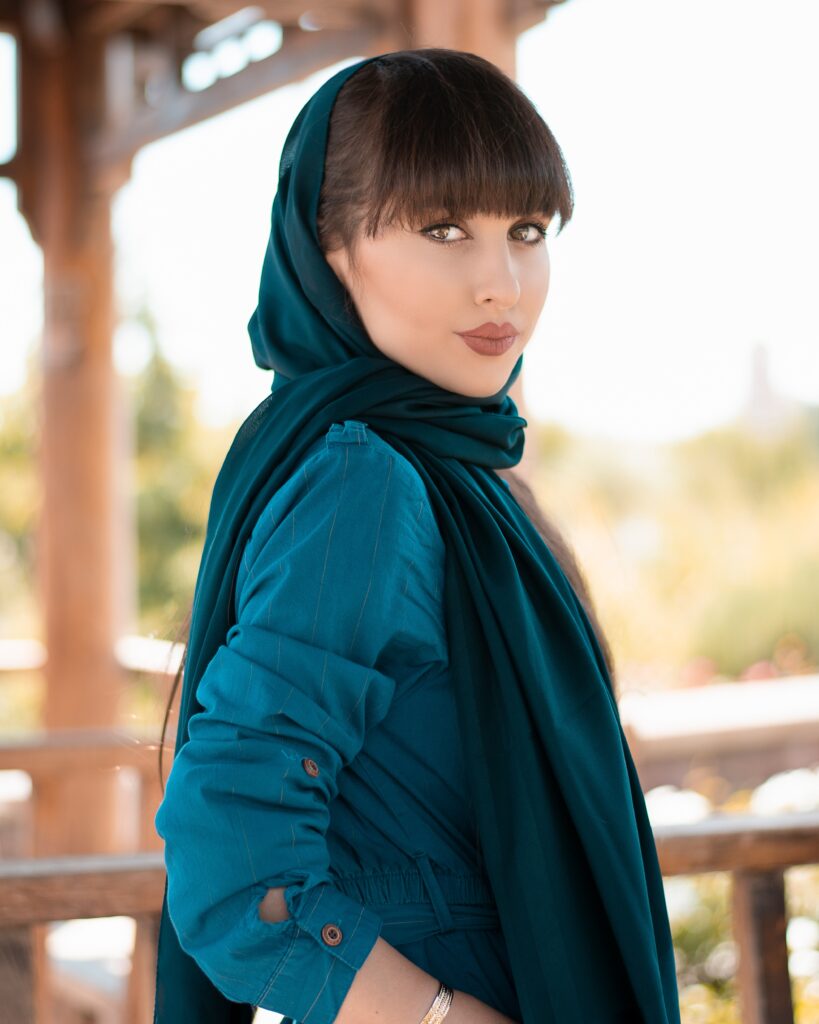
The effects on body image and self-esteem
It comes as no surprise to me that researchers have found a strong correlation between the exposure to beauty images in media and low levels of body satisfaction and, consequently low self-esteem.[18] Body dissatisfaction results in eating disorders, such as anorexia or obesity.[19] Body image refers to “a person’s perception of their physical self and the thoughts and feelings, positive, negative or both, which result from that perception”.[20] According to Henriques and Patnaik (2020), social media portrays women who are slim as being more beautiful and successful, which causes a negative body image among female viewers. This affects their psychological wellbeing.
Saltzberg and Christler (2006) argue that due to the fluctuation of beauty ideals only few women are able to attain, women basically set themselves up for failure and disappointment.[21] The beauty images that we see daily on social media and TV are photoshopped or the celebrities have undergone cosmetic surgery. It is thus unrealistic to attain the physical attractiveness that we are bombarded with. Some women choose for cosmetic surgery to attain that physical attractiveness. The downside of this is however that it can become an addiction because there are always more things that people want to change and it does not make them necessarily happier.[22]
With the knowledge that beauty is constructed and something to be strived for, it becomes clear that the feminine body is never perceived to be naturally beautiful. This reminds me of a Dutch saying: wie mooi wil zijn moet pijn lijden (direct translation: who wants to be pretty, must endure pain). It captures the idea that we are never in a state of being naturally beautiful, beauty is something to be attained, and involves a level of pain. If you undergo cosmetic surgery, you experience pain. If you go for hair removal treatment, you experience pain. But you are beautiful afterwards according to society’s standards.
I find it worrisome that women are sold the idea that they are not beautiful if they don’t meet beauty standards. This not only makes women feel insecure about their bodies, but it also keeps them from achieving more significant goals. Beauty treatments are expensive, time-consuming, painful, and risky. The sad part, the cosmetics and beauty industry now have a new target: men. The male beauty industry is thriving and is expected to grow further. This is not a sign of equality, but a sign of regression. The anxiety that we instilled on women for centuries, we now instill on men. Whatever decisions you make about your physical appearance, always remember that beauty is measured against the judgement of others and yourself. Beauty on its own does not exist but is created by observers including yourself.
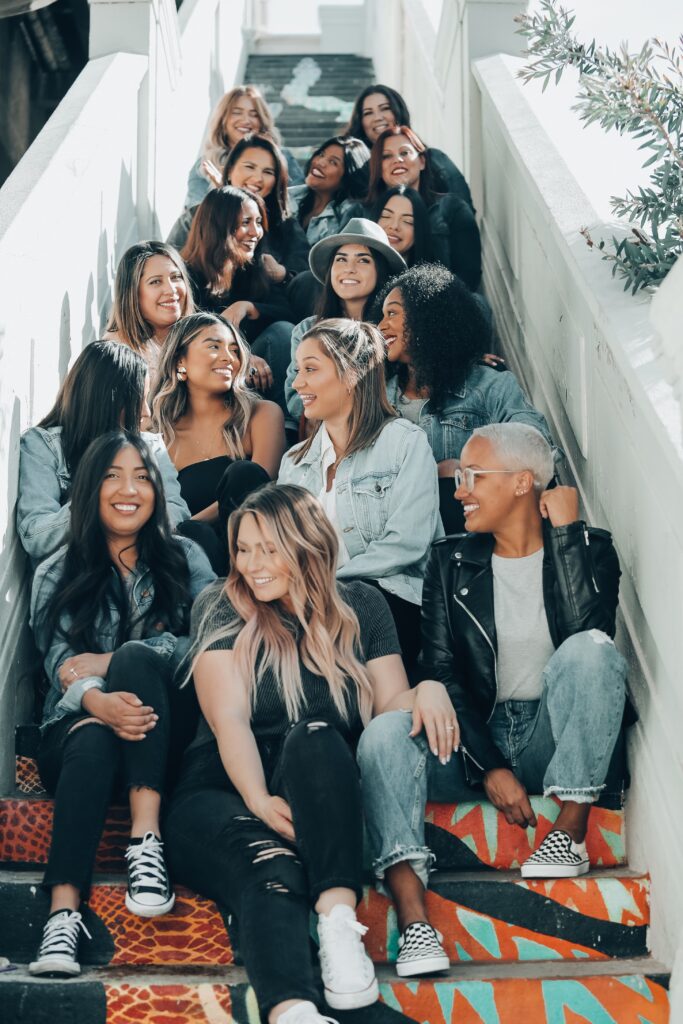
References & picture credits
[1] Thesander, M. (1997). The feminine ideal. Reaktion Books.; Calogero, Rachel M. and Boroughs, Michael and Thompson, J. Kevin (2007) The impact of Western beauty ideals on the lives of women and men: A sociocultural perspective. In: Swami, Viren and Furnham, Adrian, eds. Body beautiful: Evolutionary and sociocultural perspectives. Palgrave Macmillan, United Kingdom, pp. 259-298.
[2] Henriques, M., & Patnaik, D. (2020). Social Media and Its Effects on Beauty. In Beauty-Cosmetic Science, Cultural Issues and Creative Developments. IntechOpen.
[3] De Casanova, E. M. (2018). Beauty Ideology in Latin America. dObra [s]: revista da Associação Brasileira de Estudos de Pesquisas em Moda, 11(23), 10-21.
[4] De Casanova, E. M. (2018). Beauty Ideology in Latin America. dObra [s]: revista da Associação Brasileira de Estudos de Pesquisas em Moda, 11(23), 10-21.
[5] Viladrich, A., Yeh, M. C., Bruning, N., & Weiss, R. (2009). “Do real women have curves?” Paradoxical body images among Latinas in New York City. Journal of immigrant and minority health, 11(1), 20-28.
[6] Li, E. P., Min, H. J., & Belk, R. W. (2008). Skin lightening and beauty in four Asian cultures. ACR North American Advances.
[7] Gelles, R. (2011). Fair and lovely: Standards of beauty, globalization, and the modern Indian woman.
[8] Paul, A. (2016). Beyond the pale?: Skinderella stories and colourism in India. Ideaz, 14, 133.
[9] Calogero, Rachel M. and Boroughs, Michael and Thompson, J. Kevin (2007) The impact of Western beauty ideals on the lives of women and men: A sociocultural perspective. In: Swami, Viren and Furnham, Adrian, eds. Body beautiful: Evolutionary and sociocultural perspectives. Palgrave Macmillan, United Kingdom, pp. 259-298.
[10] Gosselink, C. A., Cox, D. L., McClure, S. J., & De Jong, M. L. (2008). Ravishing or ravaged: Women’s relationships with women in the context of aging and western beauty culture. The International Journal of Aging and Human Development, 66(4), 307-327.
[11] Chen, T., Lian, K., Lorenzana, D., Shahzad, N., & Wong, R. Occidentalisation of Beauty Standards: Eurocentrism in Asia.
[12] Ouldzeidoune, N., Keating, J., Bertrand, J., & Rice, J. (2013). A description of female genital mutilation and force-feeding practices in Mauritania: implications for the protection of child rights and health. PLoS One, 8(4), e60594.
[16] Kashmar, M., Alsufyani, M. A., Ghalamkarpour, F., Chalouhi, M., Alomer, G., Ghannam, S., … & Rogers, J. D. (2019). Consensus opinions on facial beauty and implications for aesthetic treatment in Middle Eastern women. Plastic and Reconstructive Surgery Global Open, 7(4).
[17] https://tajmeeli.com/en/tajmeeli-annual-survey-data/
[21] Saltzberg and Chrisler (2006). Beauty is the beast: Psychological effects of the pursuit of the perfect female body.
Photo by Josue Ladoo Pelegrin on Unsplash
Photo by Monica Silva on Unsplash
Photo by Thanh Duc PHAN on Unsplash
Photo by Dollar Gill on Unsplash
Photo by Raamin ka on Unsplash
Photo by Joel Muniz on Unsplash
Photo by Jackson David on Unsplash
